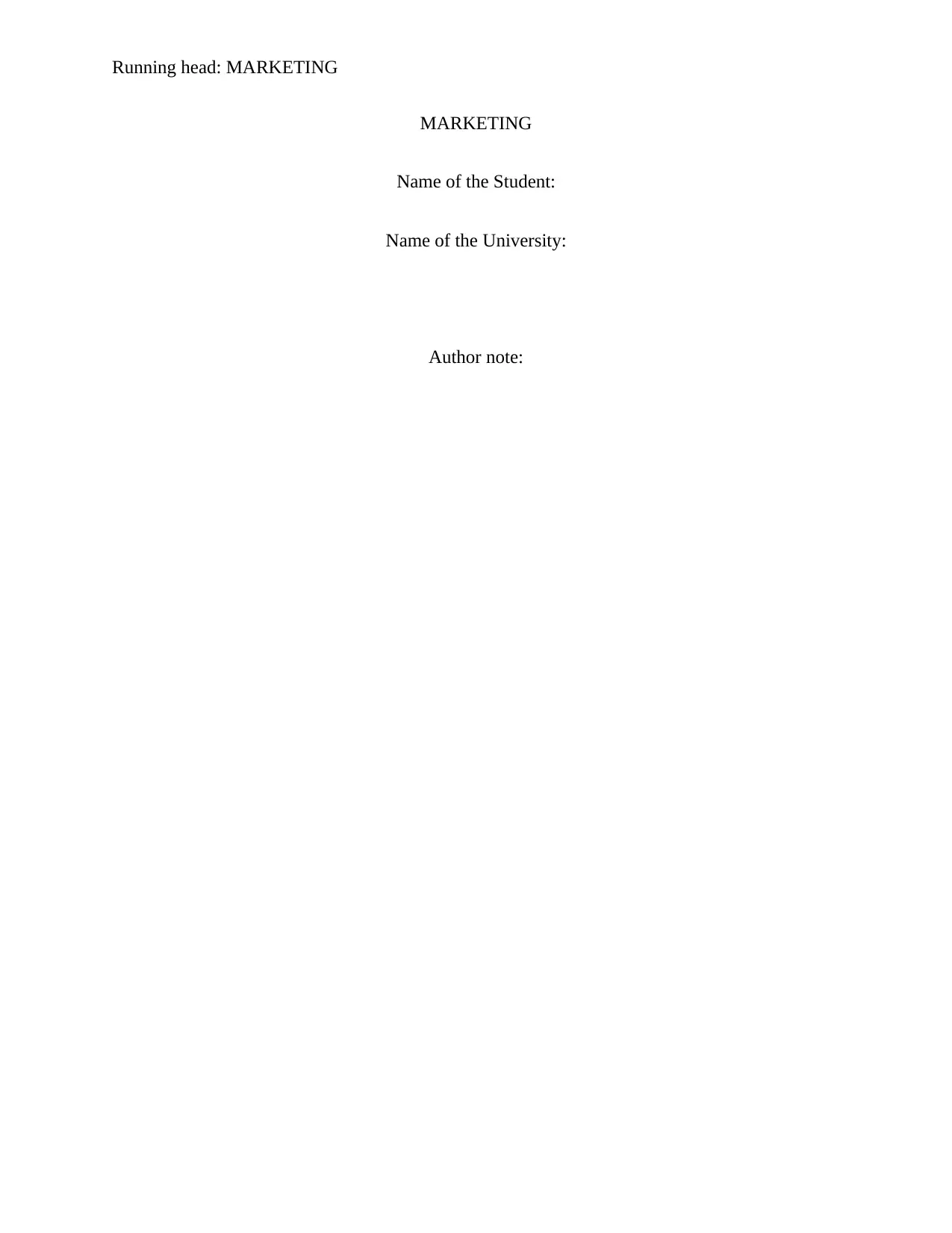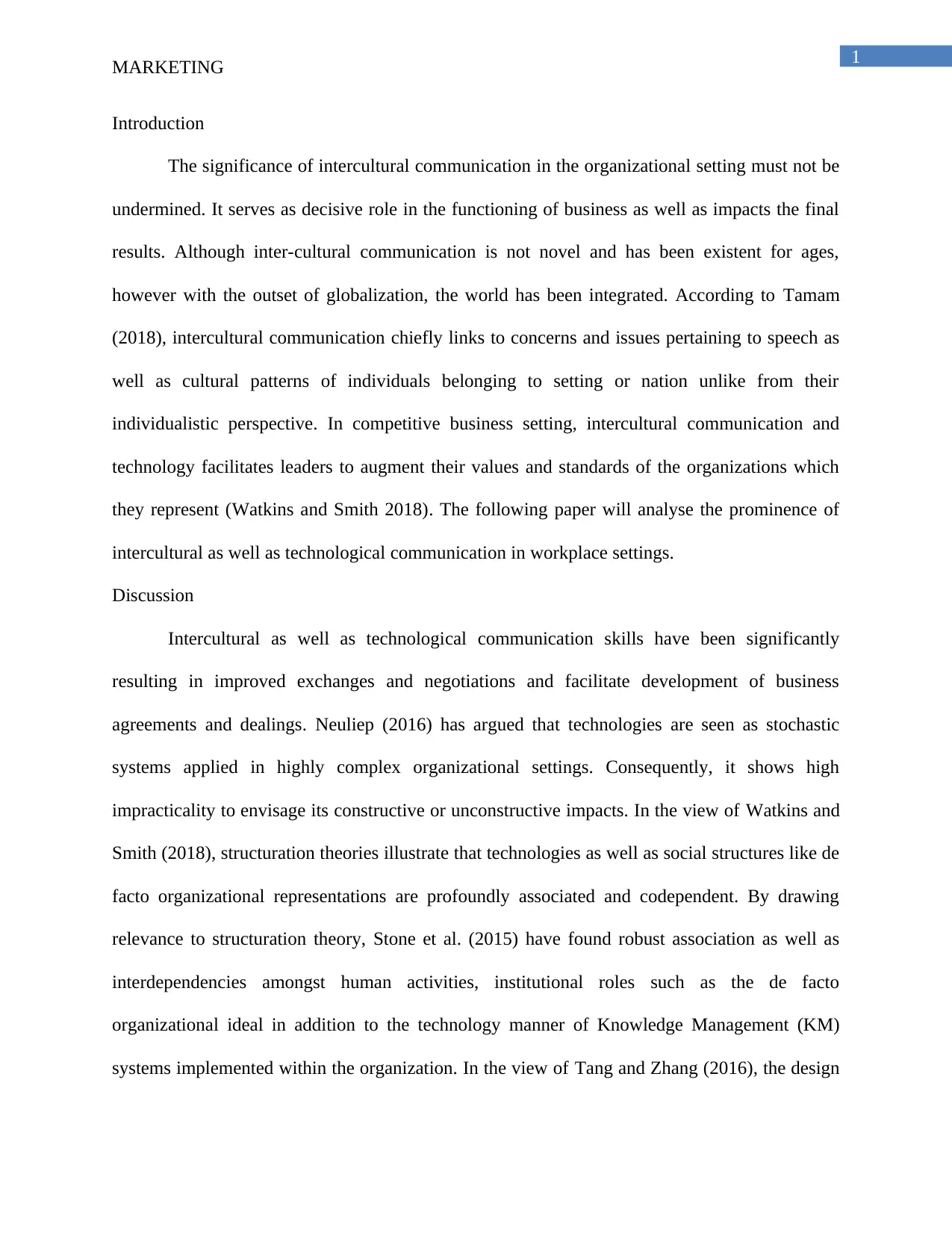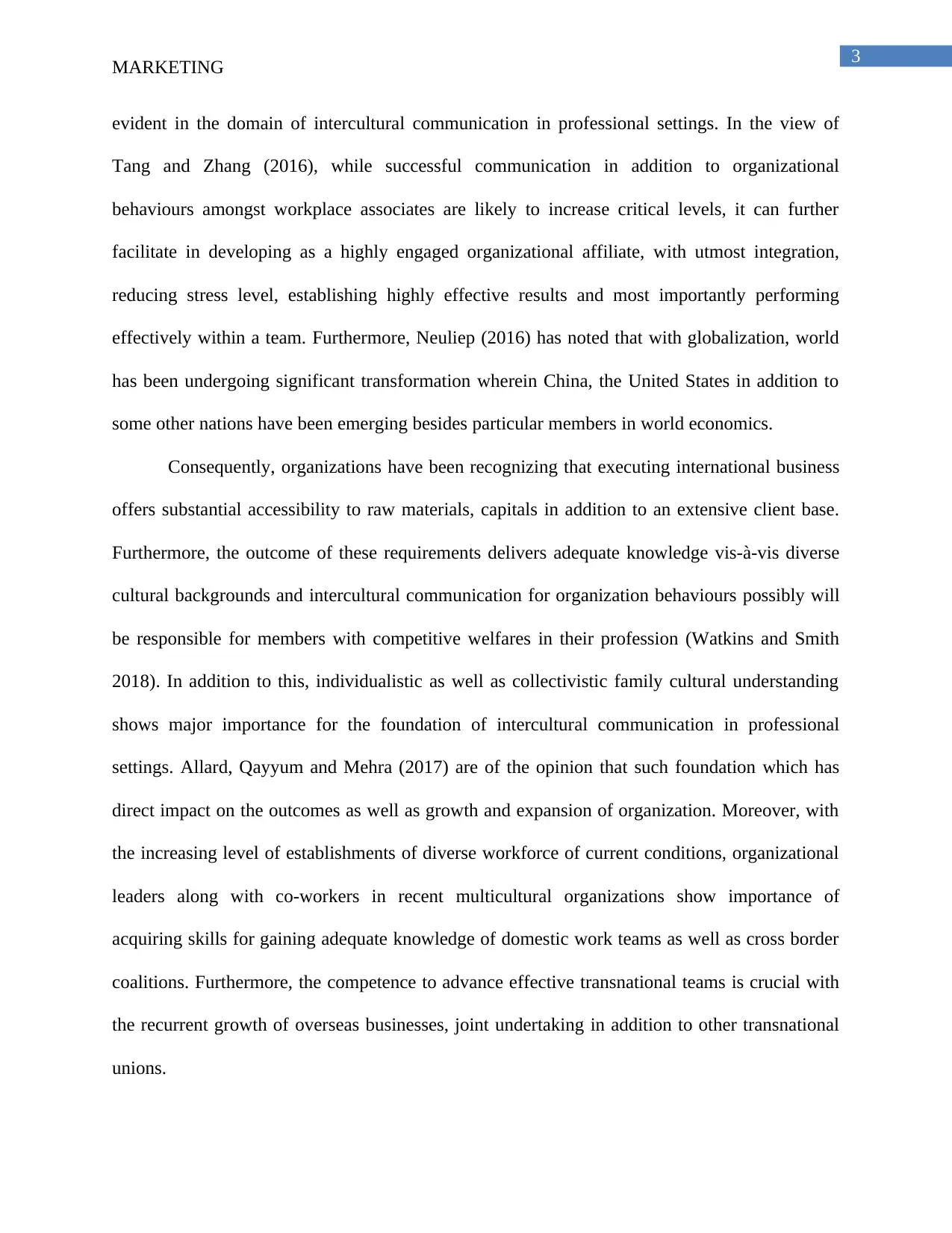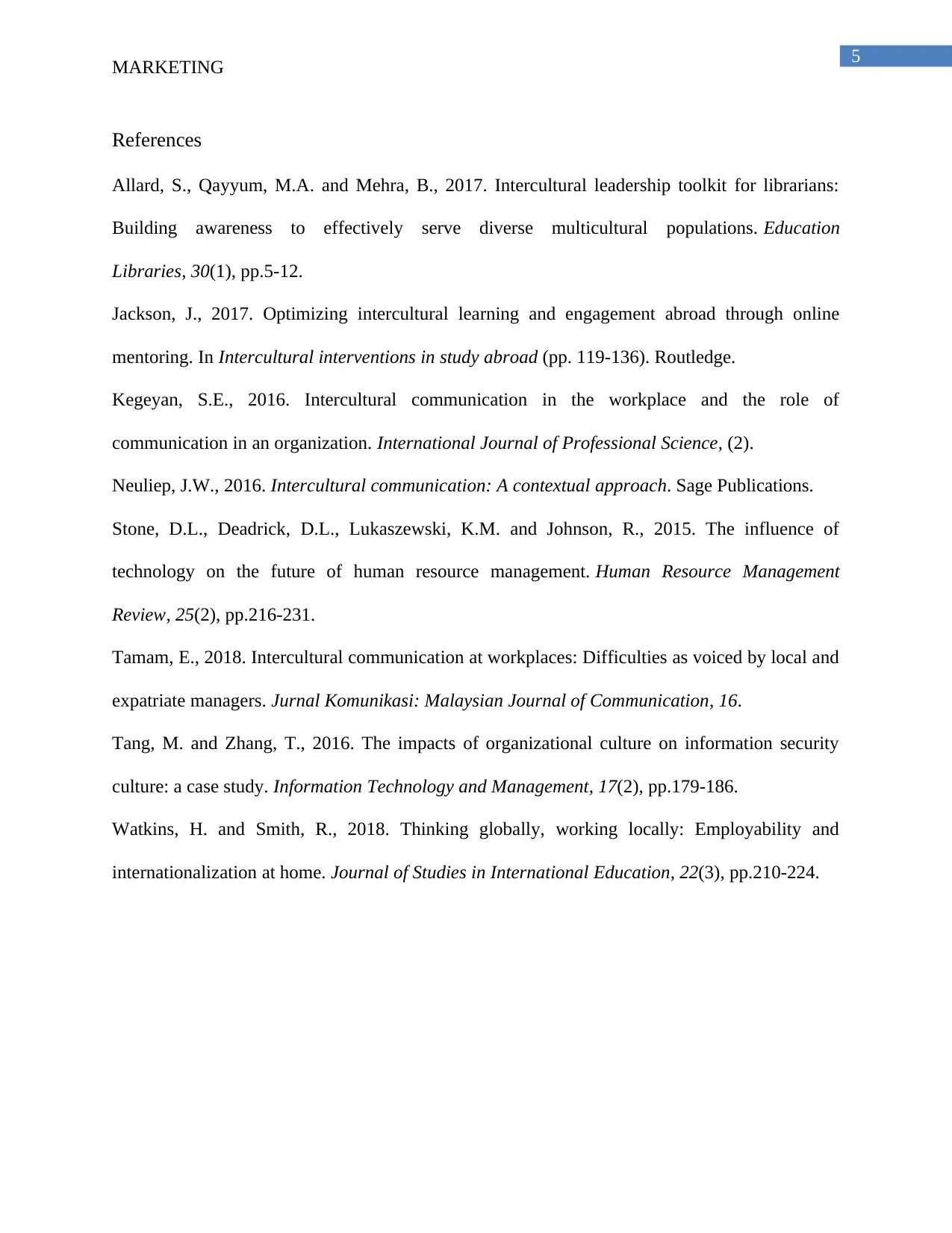Analyzing Intercultural and Technological Communication in Business
VerifiedAdded on 2022/09/08
|6
|1425
|10
Essay
AI Summary
This essay examines the critical role of intercultural and technological communication in the contemporary business environment. It emphasizes the significance of these skills in fostering improved exchanges, facilitating negotiations, and driving the development of business agreements within a globalized marketplace. The essay delves into the interplay between technological advancements and social structures, highlighting how technology shapes organizational processes and influences employee behavior. Furthermore, it explores the importance of intercultural communication in promoting diversity awareness and effective cross-cultural strategies. The essay analyzes the challenges and benefits of effective communication in diverse workplaces, emphasizing its impact on productivity, employee engagement, and overall organizational success. The conclusion underscores the importance of intercultural communication for achieving organizational goals, interpreting cultural differences, and fostering respect in professional settings, as well as the need for leaders and coworkers to possess adequate understanding of different cultures and values.

Running head: MARKETING
MARKETING
Name of the Student:
Name of the University:
Author note:
MARKETING
Name of the Student:
Name of the University:
Author note:
Paraphrase This Document
Need a fresh take? Get an instant paraphrase of this document with our AI Paraphraser

1
MARKETING
Introduction
The significance of intercultural communication in the organizational setting must not be
undermined. It serves as decisive role in the functioning of business as well as impacts the final
results. Although inter-cultural communication is not novel and has been existent for ages,
however with the outset of globalization, the world has been integrated. According to Tamam
(2018), intercultural communication chiefly links to concerns and issues pertaining to speech as
well as cultural patterns of individuals belonging to setting or nation unlike from their
individualistic perspective. In competitive business setting, intercultural communication and
technology facilitates leaders to augment their values and standards of the organizations which
they represent (Watkins and Smith 2018). The following paper will analyse the prominence of
intercultural as well as technological communication in workplace settings.
Discussion
Intercultural as well as technological communication skills have been significantly
resulting in improved exchanges and negotiations and facilitate development of business
agreements and dealings. Neuliep (2016) has argued that technologies are seen as stochastic
systems applied in highly complex organizational settings. Consequently, it shows high
impracticality to envisage its constructive or unconstructive impacts. In the view of Watkins and
Smith (2018), structuration theories illustrate that technologies as well as social structures like de
facto organizational representations are profoundly associated and codependent. By drawing
relevance to structuration theory, Stone et al. (2015) have found robust association as well as
interdependencies amongst human activities, institutional roles such as the de facto
organizational ideal in addition to the technology manner of Knowledge Management (KM)
systems implemented within the organization. In the view of Tang and Zhang (2016), the design
MARKETING
Introduction
The significance of intercultural communication in the organizational setting must not be
undermined. It serves as decisive role in the functioning of business as well as impacts the final
results. Although inter-cultural communication is not novel and has been existent for ages,
however with the outset of globalization, the world has been integrated. According to Tamam
(2018), intercultural communication chiefly links to concerns and issues pertaining to speech as
well as cultural patterns of individuals belonging to setting or nation unlike from their
individualistic perspective. In competitive business setting, intercultural communication and
technology facilitates leaders to augment their values and standards of the organizations which
they represent (Watkins and Smith 2018). The following paper will analyse the prominence of
intercultural as well as technological communication in workplace settings.
Discussion
Intercultural as well as technological communication skills have been significantly
resulting in improved exchanges and negotiations and facilitate development of business
agreements and dealings. Neuliep (2016) has argued that technologies are seen as stochastic
systems applied in highly complex organizational settings. Consequently, it shows high
impracticality to envisage its constructive or unconstructive impacts. In the view of Watkins and
Smith (2018), structuration theories illustrate that technologies as well as social structures like de
facto organizational representations are profoundly associated and codependent. By drawing
relevance to structuration theory, Stone et al. (2015) have found robust association as well as
interdependencies amongst human activities, institutional roles such as the de facto
organizational ideal in addition to the technology manner of Knowledge Management (KM)
systems implemented within the organization. In the view of Tang and Zhang (2016), the design

2
MARKETING
of technology has been intensely shaped by the institution roles besides organizational
possessions. Its introduction enables individuals to interpret the procedures designed in the
arrangement and typically enables to modify their conventional actions.
According to Kegeyan (2016), in individuals implement the novel processes; they
eventually show the propensity to introduce innovative activities in addition to new principles,
new potentials which in the future are likely to shape the organizational structure of an
organization. Technology serves decisive role in offering communicators which is a complex
process with essential tools in order to seamlessly attain, engage as well as connect their staffs.
Implementation of technological communication aims to enrich their experience irrespective of
location or roles assigned. Neuliep (2016) has noted that with greater expansion and diversity of
workforce and increasing virtual development, these tools will show greater importance as
expected before.
Meanwhile, intercultural communication in professional settings tends to understand the
diversity, whereby employees of dominant cultural patterns are provided knowledge about the
notion of diversity in the organization. Jackson (2017) has drawn relevance from Varner’s model
on intercultural business communication strategy which relates to cross-cultural strategy as well
as communication strategy. Comprehensive studies have mentioned that specific segment of
organizations show low arte of challenges and improved communication to attain rapid
productivity, while work activities besides the success relies on the efficacy of communication
with other cultural patterns. According to Allard, Qayyum and Mehra (2017), intercultural
communication is not simply understood as language, but greatly sheds light on the management
of diversity language. On the contrary, Kegeyan (2016) has argued about obstacles of improved
communication in organization which are considered as issues with implication which are highly
MARKETING
of technology has been intensely shaped by the institution roles besides organizational
possessions. Its introduction enables individuals to interpret the procedures designed in the
arrangement and typically enables to modify their conventional actions.
According to Kegeyan (2016), in individuals implement the novel processes; they
eventually show the propensity to introduce innovative activities in addition to new principles,
new potentials which in the future are likely to shape the organizational structure of an
organization. Technology serves decisive role in offering communicators which is a complex
process with essential tools in order to seamlessly attain, engage as well as connect their staffs.
Implementation of technological communication aims to enrich their experience irrespective of
location or roles assigned. Neuliep (2016) has noted that with greater expansion and diversity of
workforce and increasing virtual development, these tools will show greater importance as
expected before.
Meanwhile, intercultural communication in professional settings tends to understand the
diversity, whereby employees of dominant cultural patterns are provided knowledge about the
notion of diversity in the organization. Jackson (2017) has drawn relevance from Varner’s model
on intercultural business communication strategy which relates to cross-cultural strategy as well
as communication strategy. Comprehensive studies have mentioned that specific segment of
organizations show low arte of challenges and improved communication to attain rapid
productivity, while work activities besides the success relies on the efficacy of communication
with other cultural patterns. According to Allard, Qayyum and Mehra (2017), intercultural
communication is not simply understood as language, but greatly sheds light on the management
of diversity language. On the contrary, Kegeyan (2016) has argued about obstacles of improved
communication in organization which are considered as issues with implication which are highly
⊘ This is a preview!⊘
Do you want full access?
Subscribe today to unlock all pages.

Trusted by 1+ million students worldwide

3
MARKETING
evident in the domain of intercultural communication in professional settings. In the view of
Tang and Zhang (2016), while successful communication in addition to organizational
behaviours amongst workplace associates are likely to increase critical levels, it can further
facilitate in developing as a highly engaged organizational affiliate, with utmost integration,
reducing stress level, establishing highly effective results and most importantly performing
effectively within a team. Furthermore, Neuliep (2016) has noted that with globalization, world
has been undergoing significant transformation wherein China, the United States in addition to
some other nations have been emerging besides particular members in world economics.
Consequently, organizations have been recognizing that executing international business
offers substantial accessibility to raw materials, capitals in addition to an extensive client base.
Furthermore, the outcome of these requirements delivers adequate knowledge vis-à-vis diverse
cultural backgrounds and intercultural communication for organization behaviours possibly will
be responsible for members with competitive welfares in their profession (Watkins and Smith
2018). In addition to this, individualistic as well as collectivistic family cultural understanding
shows major importance for the foundation of intercultural communication in professional
settings. Allard, Qayyum and Mehra (2017) are of the opinion that such foundation which has
direct impact on the outcomes as well as growth and expansion of organization. Moreover, with
the increasing level of establishments of diverse workforce of current conditions, organizational
leaders along with co-workers in recent multicultural organizations show importance of
acquiring skills for gaining adequate knowledge of domestic work teams as well as cross border
coalitions. Furthermore, the competence to advance effective transnational teams is crucial with
the recurrent growth of overseas businesses, joint undertaking in addition to other transnational
unions.
MARKETING
evident in the domain of intercultural communication in professional settings. In the view of
Tang and Zhang (2016), while successful communication in addition to organizational
behaviours amongst workplace associates are likely to increase critical levels, it can further
facilitate in developing as a highly engaged organizational affiliate, with utmost integration,
reducing stress level, establishing highly effective results and most importantly performing
effectively within a team. Furthermore, Neuliep (2016) has noted that with globalization, world
has been undergoing significant transformation wherein China, the United States in addition to
some other nations have been emerging besides particular members in world economics.
Consequently, organizations have been recognizing that executing international business
offers substantial accessibility to raw materials, capitals in addition to an extensive client base.
Furthermore, the outcome of these requirements delivers adequate knowledge vis-à-vis diverse
cultural backgrounds and intercultural communication for organization behaviours possibly will
be responsible for members with competitive welfares in their profession (Watkins and Smith
2018). In addition to this, individualistic as well as collectivistic family cultural understanding
shows major importance for the foundation of intercultural communication in professional
settings. Allard, Qayyum and Mehra (2017) are of the opinion that such foundation which has
direct impact on the outcomes as well as growth and expansion of organization. Moreover, with
the increasing level of establishments of diverse workforce of current conditions, organizational
leaders along with co-workers in recent multicultural organizations show importance of
acquiring skills for gaining adequate knowledge of domestic work teams as well as cross border
coalitions. Furthermore, the competence to advance effective transnational teams is crucial with
the recurrent growth of overseas businesses, joint undertaking in addition to other transnational
unions.
Paraphrase This Document
Need a fresh take? Get an instant paraphrase of this document with our AI Paraphraser

4
MARKETING
On the hand, Jackson (2017) has claimed that for many new joiners, typically
organizations setup knowledge development programs. However, at this juncture, Watkins and
Smith (2018) have argued that it is highly imperative to offer knowledge development program
as the organizational culture can be deliberated in organizational policies, strategies and
accountabilities of staffs for the organization. Moreover, equal opportunity and justice can be
deliberated to discourage acts of racism and discrimination. However, the highly effective and
operational approach of promoting healthy intercultural communication depends on capably
depressing acts of racism and discrimination which will avert embarrassing situations resulting in
rise of critical and adverse results.
Conclusion
Hence to conclude, technological communication suggests seeking for the competence of
targeting content, evaluate accessibility and productivity by driving information to other
domains. Additionally, it enables personalization of the experience and enables dual
communication. Intercultural communication is not simply understood as language, but greatly
sheds light on the management of diversity language. Thus, intercultural communication is
imperative as realizing goals of organization and interpreting dissimilarities between cultures as
well as showing respect every culture in professional settings, provided co-workers as well as
leaders have adequate understanding about other values and cultures.
MARKETING
On the hand, Jackson (2017) has claimed that for many new joiners, typically
organizations setup knowledge development programs. However, at this juncture, Watkins and
Smith (2018) have argued that it is highly imperative to offer knowledge development program
as the organizational culture can be deliberated in organizational policies, strategies and
accountabilities of staffs for the organization. Moreover, equal opportunity and justice can be
deliberated to discourage acts of racism and discrimination. However, the highly effective and
operational approach of promoting healthy intercultural communication depends on capably
depressing acts of racism and discrimination which will avert embarrassing situations resulting in
rise of critical and adverse results.
Conclusion
Hence to conclude, technological communication suggests seeking for the competence of
targeting content, evaluate accessibility and productivity by driving information to other
domains. Additionally, it enables personalization of the experience and enables dual
communication. Intercultural communication is not simply understood as language, but greatly
sheds light on the management of diversity language. Thus, intercultural communication is
imperative as realizing goals of organization and interpreting dissimilarities between cultures as
well as showing respect every culture in professional settings, provided co-workers as well as
leaders have adequate understanding about other values and cultures.

5
MARKETING
References
Allard, S., Qayyum, M.A. and Mehra, B., 2017. Intercultural leadership toolkit for librarians:
Building awareness to effectively serve diverse multicultural populations. Education
Libraries, 30(1), pp.5-12.
Jackson, J., 2017. Optimizing intercultural learning and engagement abroad through online
mentoring. In Intercultural interventions in study abroad (pp. 119-136). Routledge.
Kegeyan, S.E., 2016. Intercultural communication in the workplace and the role of
communication in an organization. International Journal of Professional Science, (2).
Neuliep, J.W., 2016. Intercultural communication: A contextual approach. Sage Publications.
Stone, D.L., Deadrick, D.L., Lukaszewski, K.M. and Johnson, R., 2015. The influence of
technology on the future of human resource management. Human Resource Management
Review, 25(2), pp.216-231.
Tamam, E., 2018. Intercultural communication at workplaces: Difficulties as voiced by local and
expatriate managers. Jurnal Komunikasi: Malaysian Journal of Communication, 16.
Tang, M. and Zhang, T., 2016. The impacts of organizational culture on information security
culture: a case study. Information Technology and Management, 17(2), pp.179-186.
Watkins, H. and Smith, R., 2018. Thinking globally, working locally: Employability and
internationalization at home. Journal of Studies in International Education, 22(3), pp.210-224.
MARKETING
References
Allard, S., Qayyum, M.A. and Mehra, B., 2017. Intercultural leadership toolkit for librarians:
Building awareness to effectively serve diverse multicultural populations. Education
Libraries, 30(1), pp.5-12.
Jackson, J., 2017. Optimizing intercultural learning and engagement abroad through online
mentoring. In Intercultural interventions in study abroad (pp. 119-136). Routledge.
Kegeyan, S.E., 2016. Intercultural communication in the workplace and the role of
communication in an organization. International Journal of Professional Science, (2).
Neuliep, J.W., 2016. Intercultural communication: A contextual approach. Sage Publications.
Stone, D.L., Deadrick, D.L., Lukaszewski, K.M. and Johnson, R., 2015. The influence of
technology on the future of human resource management. Human Resource Management
Review, 25(2), pp.216-231.
Tamam, E., 2018. Intercultural communication at workplaces: Difficulties as voiced by local and
expatriate managers. Jurnal Komunikasi: Malaysian Journal of Communication, 16.
Tang, M. and Zhang, T., 2016. The impacts of organizational culture on information security
culture: a case study. Information Technology and Management, 17(2), pp.179-186.
Watkins, H. and Smith, R., 2018. Thinking globally, working locally: Employability and
internationalization at home. Journal of Studies in International Education, 22(3), pp.210-224.
⊘ This is a preview!⊘
Do you want full access?
Subscribe today to unlock all pages.

Trusted by 1+ million students worldwide
1 out of 6
Related Documents
Your All-in-One AI-Powered Toolkit for Academic Success.
+13062052269
info@desklib.com
Available 24*7 on WhatsApp / Email
![[object Object]](/_next/static/media/star-bottom.7253800d.svg)
Unlock your academic potential
Copyright © 2020–2025 A2Z Services. All Rights Reserved. Developed and managed by ZUCOL.





